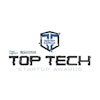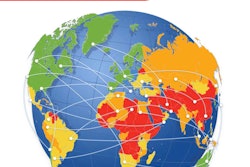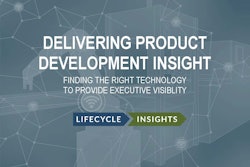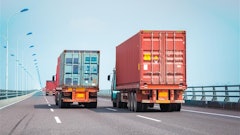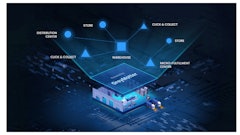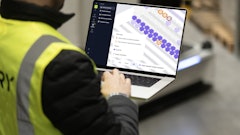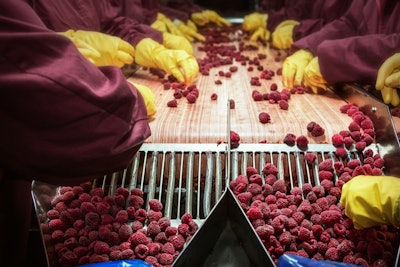
The complexities of global food supply chains are compounding the challenges of visibility, compliance and maintaining product freshness. Simply put, longer supply chains with multiple modes of transportation and touch points make it difficult for stakeholders to access real-time information that they can act upon. Add to that the quick and accurate response that’s required in the case of a recall, and it’s obvious that there are gaps that need to be addressed.
Jason Andersen, vice president of business line management at Stratus, agrees that, “Food and beverage is one industry that can benefit from Industrial IoT (IIoT) tremendously, as increased connectivity can improve quality, safety and efficiency while also optimizing overall production through predictive maintenance and reduced operational costs.”
When it comes to food manufacturers in particular, there’s a continual need to increase speed and efficiency during the manufacturing and production process without compromising food safety, which requires food manufacturers to first modernize their automation systems and IT infrastructures, explains Andersen.
Log in to view the full article
The complexities of global food supply chains are compounding the challenges of visibility, compliance and maintaining product freshness. Simply put, longer supply chains with multiple modes of transportation and touch points make it difficult for stakeholders to access real-time information that they can act upon. Add to that the quick and accurate response that’s required in the case of a recall, and it’s obvious that there are gaps that need to be addressed.
Jason Andersen, vice president of business line management at Stratus, agrees that, “Food and beverage is one industry that can benefit from Industrial IoT (IIoT) tremendously, as increased connectivity can improve quality, safety and efficiency while also optimizing overall production through predictive maintenance and reduced operational costs.”
When it comes to food manufacturers in particular, there’s a continual need to increase speed and efficiency during the manufacturing and production process without compromising food safety, which requires food manufacturers to first modernize their automation systems and IT infrastructures, explains Andersen.
“This can be done with IIoT’s intelligence and speed, combined with its devices’ abilities to connect throughout the supply chain and production process to collect operational data,” he says.
Yet, “While IIoT promises revolutionary improvements in efficiency, achieving success will be an evolutionary process for most food manufacturers,” he says. “A ‘rip and replace’ model of implementation is not feasible in these environments, so manufacturers that wish to modernize should begin so by using IIoT to connect and supplement their existing automated systems for the most seamless transition.”
Once this process is started, “IIoT will also play a critical role in making sure that food manufacturers are meeting regulatory demands,” says Andersen.
“For example, traditional hazard analysis is done through collection of sample lots and sending them to labs for analysis—but in the future, we’re more likely to see automated, in-line analysis at the manufacturing facilities. This real-time analysis is crucial, as it enables manufacturers to identify problems faster than ever, giving them the opportunity to mitigate potentially catastrophic events before reducing waste and associated costs.”
In addition to boosting the ROI for food and manufacturers, implementing IIoT also gives them an opportunity to better understand consumers, which in turn becomes truly transformational for the business, he says.
“IIoT can track consumer sentiment on social media, simultaneously feeding that insight into business analytics to positively influence production efficiency and marketing.”
Despite the advancements IoT has brought to the food supply chain, there are still some weak links along the chain, points out Elemica’s Chief Technology Officer, Arun Samuga.
Consider the end-to-end food supply chain, starting with the farm all the way to the consumer, and then add to that the hardware, devices and sensors that are capturing data along the entire chain. It’s not surprising that it takes a great deal of infrastructure to collect all this data and then “clean it up so that it’s consumable,” says Samuga. Ultimately, it’s about being able to “derive some meaningful insights and take it to the next level so that you’re able to be proactive instead of reactive.”
A proactive food supply chain can use the IoT together with machine learning to look at past trends, past patterns, to glean intelligence and optimize supply chains for improved performance.
However, there needs to be open standards for operability of IoT devices, and that raises concerns around data security, acknowledges Samuga, which does present somewhat of a barrier to entry. Nonetheless, progress is happening on this front, he says.
The Open Connectivity Foundation is an industry group that is sponsoring an open source project to connect billions of connected devices so they can communicate with one another regardless of manufacturer, operating system, chipset or physical transport.
Clarke Stevens, chair of the data model tools task group and vice chair of the data modeling work group at the Open Connectivity Foundation, told the SDTimes that, “The true potential for IoT—just like the internet—is in interoperability.
“Simply developing a new app for each new device and ecosystem isn’t conducive to scaling. For developers to succeed, quick, secure and interoperable development is key,” he says, adding that, “IoT is most useful when it is usable by the most people and the most companies.”
IoT Applications Evolve
Once a buzzword, IoT has eclipsed what many thought possible for the technology. Yet, companies across industry sectors find innovative ways to incorporate IoT into their operations for better transparency and supply chain efficiencies.
According to Statista, the install base of globally IoT-connected devices is expected to grow from 15 billion in 2015 to 75 billion in 2025. How does the food and beverage (F&B) industry fare in those numbers? Global Market Insights reports that in 2016, 16 percent of the IoT market share was claimed by F&B applications.
IoT Market Influencers
Paul Washicko, senior vice president, product management for CalAmp, a leading telematics company, says several trends are influencing the IoT space. Network transitions for cellular carriers in the U.S. and around the world are opening the door to more targeted IoT products for both fixed assets and mobile apps. It’s contemplated that millions of more devices will be connected to the internet.
“Cost curves are trending downward, allowing companies to monitor more devices cost effectively,” says Washicko. “Previously, monitoring was limited to high-value assets. Today, unpowered asset monitoring is possible—where three years ago this was cost prohibitive. The lower cost to transmit data among many IoT devices also helps make this feasible.”
Another critical trend propelling the IoT market, says Washicko, is the regulatory environment. Regulations themselves are requiring more electronically connected devices, such as the Electronic Logging Device mandate in the trucking industry. However, similar monitoring requirements are occurring for food shipments in accordance with the Food Safety Modernization Act (FSMA).
“Food shipments may have been monitored but only at the coarse level. A reefer truck with one sensor to monitor trailer temperature, for example,” says Washicko. “However, temperature gradients within a trailer can fluctuate from one area to another. The ability to temperature monitor all aspects at a granular level from a pallet to a package provides more precise monitoring in compliance with the regulations.”
Chris Bursey, president of Direct Communication Solutions (DCS), agrees, and says it all comes down to how you can run your business efficiently and create ROI.
“What IoT brings to the table with new technologies, new solutions and new product sets, changes the game,” says Bursey. “You’re no longer relying on a person to monitor your machine; that machine is telling you when a problem exists before it becomes a disaster.”
Savagewood Brewing Company
This type of IoT monitoring is what CalAmp and DSC bring to the restaurant and beverage industry. As a partner of CalAmp, DCS integrates the company’s tools and equipment into innovative solutions for DCS customers. Bursey says in a F&B environment, the ability to monitor temperature thresholds, CO2 levels and humidity in walk-in refrigerators is business critical.
Within a bar or restaurant, draft beers and sodas run on CO2. A service company checks those levels every couple weeks to refill the tanks if they’re low. Bursey says eventually Murphy’s Law occurs and the CO2 runs out prior to the scheduled service visit. The inability to serve draft beer or soda at 5:00 on a Friday is crippling to the establishment.
“We want to come to market with unique IoT solutions based on CalAmp technologies that allow bar and restaurant owners to remotely monitor and monetize their operation,” says Bursey. “Thus, prior to a dry CO2 tank, an alert is issued, a service call is made and the tank is refilled without downtime or business interruption.”
In the case of Savagewood Brewing Company, an opportunity presented itself amid a routine Friday afternoon meeting at the brewery. The brewery’s owner shared with Bursey’s team that a glycol chiller failed during the fermentation process. The chiller is critical to pumping beer through a long draft beer system. If it fails, not only is the beer warm, but it stops pouring. There’s a loss of thousands of dollars in spoilage and the brewery’s brand could suffer. A solution to the problem was quickly implemented.
“We asked the owner for feedback and input about the long draw system. It resulted in a solution based on CalAmp technology notifying staff via text and email of any temperature fluctuations in the glycol machine,” says Bursey. “The solution addressed multiple issues ranging from health and safety to temperature compliance and brand protection, ensuring sustainable cold beer, CO2 levels and revenue streams. We’re helping craft breweries and restaurants protect their highest-margin products, the safety of their customers and their brand.”
According to Darrel Brown, founder and owner of Savagewood Brewery, “Before implementing the glycol chilling solution, we had no way of knowing about a system failure, and more importantly, did not have access to information to take action to avoid an inventory loss. Today, I have peace of mind knowing I will get alerted in the event of an equipment malfunction,” says Brown. “Having a reliable monitoring system not only preserves my perishable inventory but it also protects my overall brand and customer experience.”
Endless IoT Possibilities
Whether it’s a small- to medium-sized F&B business like Savagewood Brewing Company, or a large food manufacturer, IoT is poised to drive efficiencies and ROI. Washicko of CalAmp says nearly everything has the potential to be monitored in the future. IoT will leave field service operators to focus on the most severe issues.
“The real promise of IoT is its ability to bring new efficiencies to businesses by enabling them to deploy resources in a more productive way to drive more revenue,” says Washicko. “Processes that require human involvement to check environmental factors will be replaced with sensored equipment transmitting those readings remotely. IoT is much more targeted and efficient, and it will change everything.”
Preventing Product Loss and Spoilage in Transit
Many of those changes are already occurring in the regulatory environment. Regulatory pressures and recall prevention are big drivers of IoT implementation across the supply chain, but limiting the financial toll of product loss and spoilage has become attractive too.
IoT-enabled solutions enable each player in the food supply chain to monitor the condition and location of their products in any environment throughout their journey.
Consider temperature monitoring, for example. There are a number of reasons companies utilize sensors for this purpose. According to Andrew Dougherty, vice president of sales for SmartSense by Digi International, the Food Safety Modernization Act (FSMA) is one big driver as more regulations are mandating it, while some companies are simply trying to avoid a food safety disaster.
“They understand what lasting damage that can have on the brand and the equity value,” Dougherty notes. “They look at companies like Chipotle and say, ‘We don’t want that to happen to us.’”
Others, he adds are financially motivated and look to IoT devices to avoid lost or spoiled product.
Intel recently unveiled a solution, the Intel Connected Logistics Platform (CLP), to address those issues. The goal of the platform is to provide near real-time visibility to help monitor the quality, integrity and security of shipments while on the move.
“Quality control of your supply chain is more than saying, ‘Oh yeah, I can cut that route down by 15 minutes.’ That’s good and that’s productive, but I think the bigger impact is in quality control,” says Chet Hullum, general manager, IoT product management at Intel.
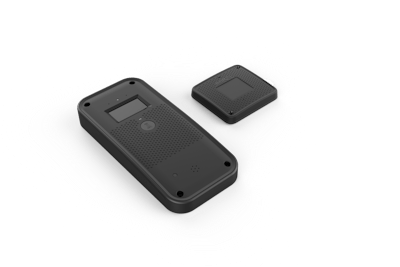 Intel’s Connected Logistics Platform uses IoT sensors to monitor assets and reduce product loss.Intel
Intel’s Connected Logistics Platform uses IoT sensors to monitor assets and reduce product loss.Intel
For Driscoll’s, a California-based seller of fresh berries, for example, quality and temperature control of produce is critical for longer shelf life. By using Intel CLP, Driscoll’s was able to see temperature variations across different vendor trucks and track temperature fluctuations, humidity effects, shelf life and third-party logistics performance, resulting in reduced customer shipment rejections due to temperature excursions and deteriorated quality.
Intel CLP also allows them to make near real-time decisions on the move.
“Now they can communicate with their supply chain and make changes and do things on the fly,” says Hullum.
For example, if a producer is notified that its truck delivering strawberries and grapes to a retailer has gone bad or shelf life has been compromised, the load can be diverted to a manufacturer like Smucker’s to make jam instead of trying to sell the produce at a retailer.
Before IoT existed, however, monitoring truckloads once they left the warehouse was nearly impossible. More robust technology—and at a much lower cost—has now made IoT an essential part of many companies’ supply chains.
“At the warehouse and distribution point of the supply chain it is very easy to set up temperature monitoring, and if there are temperature excursions, supply chain and facility managers are getting alerts that help them take corrective action to keep product from spoiling. The more difficult problem to solve is once the goods in that warehouse are loaded on a truck for delivery,” explains Dougherty.
Thanks to advancements in IoT, now if there is a temperature excursion in the reefer, the driver and the fleet or logistics manager can be notified in real time much like in the warehouse. “There is the ability in real time to take action and ensure that product isn’t lost and that food safety standards are not violated,” adds Dougherty.
Hullum notes these innovations are made possible with the marrying of IoT data with big data and cloud data.
“It’s managing the supply chain better by having the insights to do so,” he adds.
Many companies are also using a more passive approach to temperature monitoring to help reduce the acceptance of less-than-optimal shipments by installing a gateway, which pulls data off of IoT sensors at the shipping point, and another gateway at the ship-to point or destination. The sensors start reporting data as they hit that first gateway at the beginning of the voyage. At the end of the voyage (the destination), all the data is downloaded and the shipper can decide whether to accept the shipment based on its temperature profile.
“That’s not real-time data, but it gives them confidence that the product integrity is what it should be because they can see its temperature profile,” notes Dougherty. “You can download the temperature profile and say, “I want to accept this shipment or reject it based on its temperature history on its journey to me.’”
A product’s temperature profile is comprised of several important metrics, which can be collected and analyzed to prevent product loss and damage.
Humidity is especially important. Digi’s SmartSense can also detect if a truck door or roll door on a reefer is open or closed. This “really gets into driver behavior,” explains Dougherty. “Are they leaving the door open during a delivery and letting cold air escape?
GPS data is also important to know if a truck or load arrives at the expected distribution center.
Through data analysis of these key metrics, it is now even easier to understand a product and make decisions to further enhance its shelf life.
“People want to know about the temperature in the pallet or in the reefer, but what they really want to know is: What’s the temperature of the product in that truck?” says Dougherty.
Data analysis is helping Digi International answer that question for its customers. The company has invested a lot of time and resources in the space, specifically in what it calls virtual product simulation. Virtual product simulation allows the company to create software models of different food products that are being shipped. While sensors record the ambient temperature around those products, Digi is able to simulate what the actual product temperature is based on those sensor readings.
“We’re able to say, ‘Alright, while our model is predicting that your ambient temperature is at 50, we know based on historical data that your ground beef is only at 38, so you don’t need to discard that product right now,’” Dougherty explains.
As the ROI equation continues in a favorable direction, the food and beverage industry should expect additional advancements in data analysis that will not only improve their bottom line but lend a hand to a safer and more secure food supply chain.

